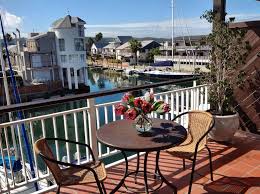
Introduction
The concept of the waterfront has increasingly gained importance in urban planning, serving as a critical point of connection between cities and their natural surroundings. With many urban environments grappling with climate change, pollution, and overcrowding, revitalizing waterfronts has emerged as a thoughtful approach to enhancing community spaces, promoting sustainable development, and boosting local economies.
Recent Developments
In recent years, several cities across Canada have undertaken ambitious waterfront redevelopment projects. For instance, Toronto’s waterfront has seen significant investment, with projects like the Eastern Waterfront revitalization aimed at transforming underutilized industrial areas into vibrant public spaces. Initiatives include parks, recreational facilities, and mixed-use developments that promote a healthier lifestyle while enhancing accessibility for residents and visitors.
Another noteworthy project is Vancouver’s waterfront initiative, which focuses on creating harmonious relationships between urban spaces and natural landscapes. The Vancouver Waterfront is being developed with sustainability principles in mind, featuring green infrastructure that helps mitigate flooding risks while becoming a gathering place for local events and activities.
Community Benefits
The waterfront can serve as a vital artery for communities, fostering local culture and tourism. Engaging public spaces along the waterfront can act as venues for markets, festivals, and concerts, enhancing social interactions among community members. Moreover, there is evidence that accessible waterfronts can increase property values and attractiveness, thereby benefiting local businesses.
Challenges Ahead
Despite the potential benefits, challenges remain in waterfront development. Ensuring accessibility for all demographic groups, navigating environmental ramifications, and balancing development pressures with conservation are significant hurdles that planners must address. Additionally, with rising sea levels and unpredictable climate events, waterfront areas face increased vulnerability that necessitates innovative and resilient design solutions.
Conclusion
The waterfront is more than just a location; it represents an opportunity for urban renewal and community integration. As cities across Canada continue to evolve, successful waterfront projects can serve as models for fostering sustainable urban development that celebrates environmental harmony and enhances the quality of life. With ongoing commitment from local governments, community stakeholders, and urban planners, the waterfront will remain a key focal point for future growth and revitalization.



